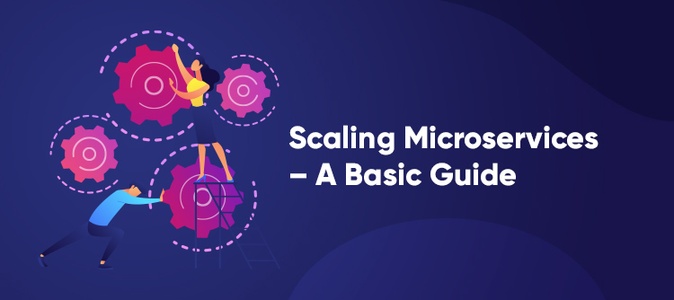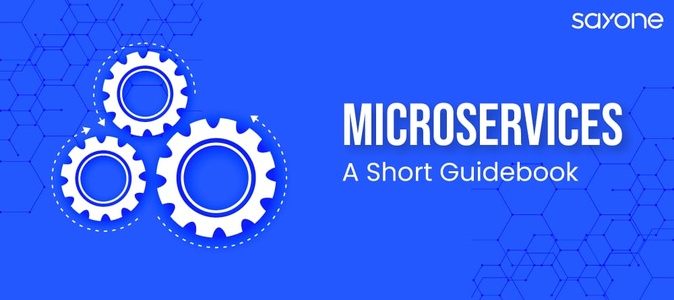Scaling Microservices – A Basic Guide

Share This Article
MICROSERVICES- A Short Guide
Table of Contents
Subscribe to Our Blog
We're committed to your privacy. SayOne uses the information you provide to us to contact you about our relevant content, products, and services. check out our privacy policy.
How Kubernetes Changed The Face Of The Cloud
Microservices is a powerful architecture model and many organizations, big and small, are changing their architecture to the microservices way. In a survey conducted by O’Reilly in 2020 with 1502 respondents, a majority of 54% of respondents claimed that the shift to microservices was mostly successful. So much about its growing popularity!
In this article, we attempt to discuss some points that you can keep in mind when trying to scale microservices. It is important to set up your microservices so that they can scale correctly and appropriately for whatever your system is set up for.
Goals of Scaling Microservices
The microservices architecture primarily splits up individual services and set them up so that they run in an isolated fashion. This means each service accomplishes just one business function and does it well. If this is getting done properly, then scaling can be done effectively.
When using a microservices system, different parts of the system can be scaled at different times. As an example, an authentication service would be more loaded than an invoice dispatch service. The authentication service is likely to be used in different parts of the software system.
Read our blog “Database Design in a Microservices Architecture”.
The primary objective of scaling up such a system would be to get the authentication function and the invoice dispatch function to any part of the system whenever required. Resources present in a system are finite and should not be over-or under-utilized at any point in time. They should be delivered to different areas of the system as and when required.
When you use a monolithic system, it is difficult to achieve this state. However, with a microservices system, it is possible to drive the resources to just where they are needed so that you can meet your operational demands at any instant.
Microservices – Different ways of Scaling
The two primary ways of scaling microservices are vertical and horizontal scaling. A specific method is used depending on the situation.
- Vertical Scaling
Vertical scaling takes place when you provide the service containers or individual hosts (memory/CPU) with more resources. When you deliver more resources to the hosts, it translates to an increased capability to accept more requests/second leading to higher concurrency.
Download our ebook for FREE “Modern commerce and microservices”.
Based on the architecture of your system and where you have deployed your containers (whether on the cloud or on-premises) this operation could be as easy as flipping a switch or may require the deliberation of the operations team.
Though adding CPU power and memory can be easily done, sometimes this may not just suffice to carry the operations through. This is because there are limits to how much memory and CPU power an application can use and what the platform can offer.
- Horizontal Scaling
In this method, you can add more units or hosts of the service to be scaled. This is more difficult to achieve practically as it means equipping your system to handle more hosts of a specific service. However, this kind of scaling can be done efficiently by observing the hotspots of the system and scaling out those specific parts. It may be as easy as adding another Kubernetes pod to meet the additional load/requirements.
Tools to assist you while scaling microservices
When you are ready to scale your system, you have to be aware of everything that is going on in the system. This is a very difficult thing to do manually. However, many tools will help you have visibility across the entire system in the form of dashboards. These will give you a real-time view of every function across the system and the factors to be mindful of. Also, these dashboards will give you a heads-up on things to look out for.
What are the Metrics to Track During Scaling
The next step to be concerned about is the metrics that need to be tracked during training. The metrics to be tracked immediately are CPU and memory usage. It is crucial to know how much of each of these resources is used in every instant. This will tell you how much of each of these resources you have to allocate to the different functions and at what stage of the operation. Once the system scales, it will be easy for you to predict how many more extra resources you need to keep handy to allocate to these functions.
The next aspect to worry about is traffic. You have to determine how much traffic is going to each of your services. When you track raw network traffic, it is a comparatively easy job to complete. This helps you to identify the information bottlenecks and the hotspots across the system.
This gets a little more complicated when you shift into the next gear of wanting to know what is available in the traffic that reaches the services. Here you have to do a more granular search of the traffic.
Other factors you monitor as the next step include saturation, latency, errors, and traffic. Saturation measures the “fullness” of your service and can be captured using the CPU, memory, network, and disk metrics. Errors, latency, and traffic are closely related to the RED metrics which stand for the rate, errors, and duration. Specifically, they are defined as:
- Rate: Number of requests the services handle in a second
- Errors: Number of failed requests per second
- Duration: The amount of time that each request takes
Measuring these metrics gives you a solid understanding of the performance of your service.
Conclusion
Scaling a microservices system is not a very easy thing to do. However, this article will help you in setting some stop points that you need to be mindful of when you decide to scale your microservices system.
How SayOne can Help
At SayOne, our integrated teams of developers service our clients with microservices that are fully aligned with the future of the business or organization. The microservices we design and implement are formulated around the propositions of Agile and DevOps methodologies. Our system model focuses on individual components that are resilient, fortified, and highly reliable.
We design microservices for our clients in a manner that assures future success in terms of scalability and adaptation to the latest technologies. They are also constructed to accept fresh components easily and smoothly, allowing for effective function upgrades cost-effectively.
Our microservices are constructed with reusable components that offer increased flexibility and offer superior productivity for the organization/business. We work with start-ups, SMBs, and enterprises and help them to visualize the entire microservices journey and also allow for the effective coexistence of legacy systems of the organization.
Our microservices are developed for agility, efficient performance and maintenance, enhanced performance, scalability, and security.
Share This Article
Subscribe to Our Blog
We're committed to your privacy. SayOne uses the information you provide to us to contact you about our relevant content, products, and services. check out our privacy policy.



